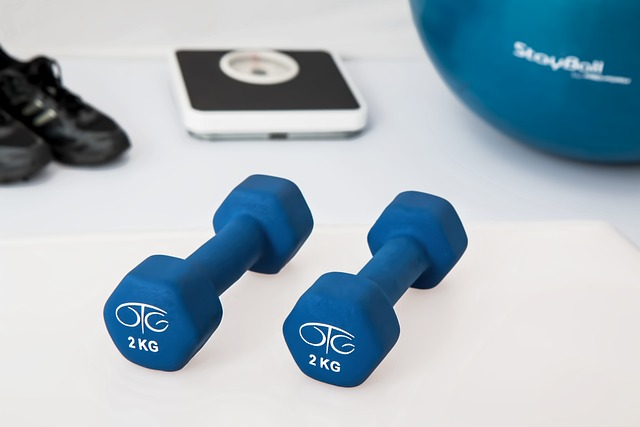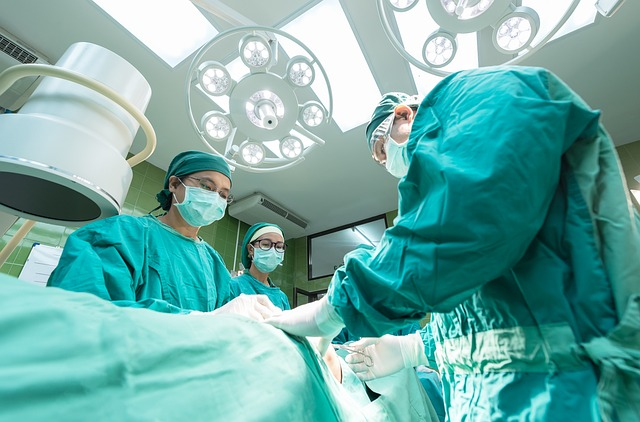If you’re scheduled for knee surgery, you understandably want the best possible outcomes. This article lays out imperative steps and clear guidance on preparing for knee surgery, designed to simplify your journey toward a successful operation and swift recovery.
Key Takeaways
- Understanding the types of knee surgeries and setting realistic expectations is crucial. Certain conditions like arthritis commonly result in knee replacement surgeries, aimed at alleviating pain and improving mobility.
- Pre-surgery preparation includes a detailed consultation with your orthopedic surgeon, reviewing medical history, discussing anesthesia options, and being transparent about current medications, as well as understanding potential risks and complications.
- Optimizing personal health before surgery is important for a successful recovery. This involves managing medications, following a balanced diet, and preparing the home environment to reduce tripping risks and ensure accessibility.
Understanding Knee Surgery and Setting Expectations
The journey begins with comprehending the different types of knee surgeries. Knee replacement, also known as knee arthroplasty or joint replacement, is a procedure where a knee damaged by arthritis is replaced with artificial components. Another less invasive procedure is knee arthroscopy, a ‘keyhole surgery’ used to diagnose and treat knee problems using small incisions, an arthroscope, and specialized tools. Typically, conditions that damage joint cartilage and bone, such as osteoarthritis, rheumatoid arthritis, and traumatic arthritis, often lead to joint replacement surgery, specifically knee replacement surgeries.
The goal of knee replacement surgery is to relieve pain that cannot be controlled by other treatments by resurfacing the damaged parts of the knee joint. When preparing for knee surgery, establishing realistic expectations is essential. While the path may be challenging, remember that the ultimate aim of knee surgery is to enhance your quality of life by alleviating pain and facilitating mobility.
Pre-Surgery Consultation with Your Orthopaedic Surgeon

The pre-surgery consultation with the orthopedic surgeon serves as a vital checkpoint on your pathway to successful knee surgery. This comprehensive discussion with your surgeon and hospital staff provides an opportunity to address your concerns, clarify doubts, and understand what to expect, ensuring you’re well-prepared for the journey ahead.
The process of medical preparation typically encourages open discussions with the surgeon about the required preparations well in advance of the surgery date. A pre-operative appointment approximately one week before the surgery is vital to check any underlying conditions, review medical history, and establish expectations for the surgery and post-operative care.
Reviewing Your Medical History
One of the pivotal aspects of your pre-surgery consultation is the review of your medical history. Providing personal and medical information helps ensure all critical information needed for a successful surgery is available. The pre-operative assessment aims to identify patient comorbidities that could lead to complications during and after surgery. Patients with a higher risk according to the American Society of Anesthesiologists Physical Status Classification System may need thorough pre-operative evaluations.
Informing your surgeon about any current medications, including homeopathic and nutritional supplements, is of paramount importance. This will help determine if they are safe to continue before and after surgery.
Understanding Anesthesia Options
The topic of anesthesia also forms a significant part of the pre-surgery consultation for a surgical leg procedure like knee replacement surgery. There are three broad categories of anesthesia: local, regional, and general. The choice depends on your health, reactions to medications and the risks involved.
There are three main types of anesthesia:
- Local anesthesia: numbs only the specific area being treated and is used to complement the main type of anesthesia during minor procedures.
- Regional anesthesia: blocks nerves to a specific area of the body without affecting the brain or breathing. Options include spinal blocks, epidural blocks, and peripheral nerve blocks.
- General anesthesia: affects the entire body and is often used for major surgeries. It causes temporary unconsciousness and may be chosen based on preference or if regional or local anesthesia is not suitable.
Each type of anesthesia has its associated risks, which can include breathing difficulties, allergic reactions, and nerve injury. These risks are evaluated by the surgeon and anesthesiologist.
Discussing Potential Risks and Complications
Acknowledging potential risks and complications forms a significant part of knee surgery preparation. Knee replacement surgery risks entail:
- Bleeding
- Infection
- Blood clots
- Damage to the prosthesis
- Fracture
- Persistent pain or stiffness
Total knee arthroplasty, also known as total knee replacement, while generally safe, may lead to minor or severe complications, including cardiac events.
There exists an elevated risk of myocardial infarction, especially within the first month following knee replacement surgery. Individuals over the age of 80 or those with a history of a heart attack are at a greater risk of myocardial infarction after undergoing knee replacement surgery. Being aware of these risks will help you make informed decisions and prepare for a successful surgery and recovery.
Personal Health Optimization Before Surgery

As the surgery date approaches, prioritizing personal health optimization becomes critical. Pre-operative assessments before surgery confirm your health status, as surgeries and anesthesia put stress on the body, and optimizing your fitness can lead to shorter hospital stays and fewer rehabilitation sessions.
A key part of this health optimization is following a healthy diet that includes a balance of fruits, vegetables, grains, lean meats, fish, poultry, low-fat dairy products, or other protein sources to ensure optimal health before knee surgery. Beyond diet, engagement in prehabilitation exercises such as physical therapy can improve circulation and muscle strength, reduce fatigue and muscle soreness, and lower the risk for complications, including blood clots.
Managing Medications and Supplements
Although medications and supplements are integral to many people’s daily routines, it’s vital to consult healthcare providers about them before surgery. Certain medications and supplements need to be discontinued before knee surgery, particularly blood thinners, to minimize excessive bleeding risks.
Blood thinners such as Plavix, Pradaxa, Xarelto, Eliquis, and Coumadin should generally be halted five days before knee surgery unless a physician advises otherwise. If you have diabetes, consult with the healthcare provider managing your condition to determine if you should take your diabetes medication before surgery.
Nutritional Considerations
A balanced diet can play a significant role in preparing your body for surgery. Here are some dietary recommendations to consider when preparing for knee surgery:
- Incorporate fish, skinless poultry, and lean meats into your diet for a heart-healthy protein source.
- Include a variety of fruits and vegetables to ensure you’re getting a range of vitamins and minerals.
- Choose whole grains, such as brown rice and whole wheat bread, for added fiber and nutrients.
- Incorporate foods rich in omega-3 fatty acids, such as salmon and walnuts, to help reduce inflammation.
- Consider adding ginger to your diet, as it may have anti-inflammatory effects.
- Supplements like glucosamine and chondroitin may assist in cartilage repair and maintenance.
By following these dietary recommendations, you can help prepare your body for knee surgery and support the healing process.
Foods rich in magnesium, such as leafy greens, may also be beneficial before and after knee surgery for managing discomfort, as magnesium acts as a natural pain reliever and muscle relaxer.
Creating a Safe and Supportive Home Environment

Establishing a safe and supportive home environment forms an integral part of the recovery journey. Clearing the home of tripping hazards is crucial for creating a safe environment during recovery from knee surgery.
Ensuring driveways and walking paths are clear of obstacles will prevent falls and make the home accessible for post-surgery mobility.
Eliminating Tripping Hazards
An important part of home preparation for recovery involves removing potential tripping hazards. By decluttering and arranging spaces to avoid obstacles, you can foster a safe recovery environment.
To reduce the risk of knee injuries during recovery, follow these steps:
- Remove throw rugs, toys, and other items from walkways to prevent tripping.
- Secure or remove electrical cords from pathways.
- Tape down carpet edges to prevent them from becoming tripping risks.
Also, install adequate lighting throughout the home, using night lights and strategically placed lamps, to ensure visibility and prevent tripping in the dark.
Adjusting Your Living Space for Accessibility
Beyond removing tripping hazards, modifying your living space for accessibility also plays a significant role in home preparation for post-surgery recovery. Rearrange furniture to create pathways that are at least three feet wide for walkers or crutches, and configure a living space on a single level of the home to avoid the necessity of navigating stairs.
To ensure a comfortable and supportive environment during recovery, consider the following:
- Place frequently used items at reachable heights to avoid kneeling
- Choose chairs with armrests for added support
- Ensure a supportive sleeping environment with bedside essentials at hand
- Install a shower chair or bath bench
- Use a raised toilet seat with grab bars to ensure stability
These measures will help promote a smooth and safe recovery process.
Secure stair railings extend them past the staircase, and ensure all installed handrails and grab bars are stable for safe mobility throughout the recovery process.
Physical Preparation Through Prehabilitation

Physical preparation through prehabilitation holds equal importance with other aspects in the surgery preparation process. Achieving optimal physical fitness before surgery may reduce the likelihood of complications and promote a faster recovery. Prioritizing physical well-being can play a vital role in preparing for the procedure.
Prehabilitation exercises for knee replacement surgery improve recovery times and overall health, with a focus on strengthening the musculature around the hip and knee joints. Additionally, building upper body strength through exercises like bicep curls, tricep extensions, and seated press-ups is important to aid in recovery, as it strengthens the ability to use walkers or crutches post-surgery.
Recommended Exercises for Strengthening
Certain exercises are recommended to fortify muscles around the knee joint. Quad sets are beneficial in engaging and strengthening the quadriceps to support the knee joint and improve stability. Gluteal sets, where the buttocks are squeezed, help in strengthening the muscles that support the hips and knees.
Initiating a prehabilitation program at least six weeks before surgery can stabilize pain levels and enable a quicker return to mobility post-surgery. Here are some exercises that can be done daily in two sets of ten repetitions to prepare the knee for surgery:
- Heel slides
- Sitting knee flexion exercises
- Short arc quads
- Standing hip abduction
- Long arc quads
These exercises are useful for enhancing the flexibility, range of motion, and strength of the knee joint.
The Role of Physical Therapy
Physical therapy holds a key role in prehabilitation. Consulting a physical therapist is crucial as exercises are prescribed based on individual needs, and not all conditions are the same. Physical therapists can create an individualized rehabilitation plan that targets specific muscles and joints to improve recovery outcomes.
Post-surgery, it is important to begin moving the new joint with the help of a physical therapist and possibly a continuous passive motion (CPM) machine, with pain managed through medication.
The Week Leading Up to Your Surgery
As the final week before surgery approaches, it becomes essential to wrap up all preparations. Arrange a ride home from the hospital after knee surgery since you will be unable to drive. Also, pack a bag with essentials such as picture ID, insurance and emergency contact info, comfortable clothes, toiletries, mobile phone, charger, headphones, books, or games for your hospital stay.
Finalizing Logistics with Your Healthcare Team
Wrapping up logistics with your healthcare team, including your primary care doctor, forms a crucial part of the preparation process. Schedule all necessary appointments leading up to the surgery, including video visits or phone consultations with pre-operative nurses. If you have any last-minute questions or concerns, don’t hesitate to contact your care team.
This proactive communication will ensure a smooth experience on the day of your knee replacement surgery.
Preparing for the Day of Your Surgery
Ensure to pack a bag with all the necessary items for your hospital stay, a day before the surgery. This includes a cell phone and charger to stay in contact with family and for any emergency communication needs with a family member.
Remember, proper preparation can pave the way for a smoother journey through surgery and recovery.
Post-Surgery Recovery and Care Plan
Post successful knee surgery, the recovery journey commences. Patients are discharged from the hospital once they:
- Have pain controlled
- Demonstrate the ability to get in and out of bed
- Walk short distances with the aid
- Climb stairs
- Bend the knee to at least 90 degrees.
Most knee replacement patients are ready to leave the hospital within 1 to 5 days, often between the second and third days post-surgery. Some patients might be discharged to a rehabilitation facility to receive more intensive care if they face challenges like living in a multi-level home without support or having other extensive rehabilitation needs.
The majority of patients reach around 90% recovery within 3 months, although full recovery to 100% may take 6 months or more.
Pain Management Strategies
Managing pain forms a critical part of post-surgery recovery. Multimodal analgesia, which combines different medications and delivery methods, is recognized as optimal for managing pain after knee replacement surgery. Starting preemptive analgesia before the surgical procedure can reduce the occurrence and intensity of postoperative pain by preventing hypersensitivity.
Local infiltration analgesia, which is applied intraoperatively, enhances pain relief and can support early patient mobilization. Patient-controlled analgesia offers individuals the ability to self-manage their postoperative pain by controlling their pain medication consumption.
Monitoring for Signs of Infection or Other Complications
Monitoring for signs of infection or complications is pivotal during the recovery process. Patients should monitor the incision site for:
- Increased redness
- Swelling
- Warmth
- Drainage
These may indicate a potential infection.
Fever or chills following surgery may also signify an infection and need to be communicated to the healthcare team. Any escalation in pain following the initial postoperative period or new onset of pain may be a red flag for infection or other complications and should be immediately reported.
Summary
In conclusion, preparing for knee surgery is a comprehensive process that involves understanding the surgery, consulting with your surgeon, optimizing personal health, creating a safe home environment, engaging in rehabilitation exercises, and finalizing logistics.
The journey towards knee surgery and recovery can seem long and challenging, but with adequate preparation and guidance from experienced professionals like Dr. Plancher and his team at Plancher Orthopaedics, you can navigate this journey with confidence. Remember, every step you take in preparation is a step closer to a successful surgery and smoother recovery.
Frequently Asked Questions
Should I shave my knee before knee surgery?
No, you should not shave your knee before knee surgery. Shaving around the area of your surgery at least 2 days before the procedure is not recommended.
What do I need at home after knee surgery?
After knee surgery at home, it’s important to have a designated recovery space with a comfortable chair or footstool to keep your legs raised. Additionally, items like a lap desk, extra pillows, walking aids, and bathroom handlebars can be helpful during recovery.
What should I do before knee surgery?
Before knee surgery, it is recommended to do knee exercises such as ankle pumps, thigh squeezes, and leg slides to strengthen the knee and aid in recovery. Additionally, it is important to follow medical preparations like cutting or decreasing certain medications, tobacco, and alcohol use, and reporting any illnesses.
What are some types of knee surgeries?
Some types of knee surgeries include knee replacement (knee arthroplasty) and knee arthroscopy. Both procedures can help address various knee issues and improve mobility.
What is the importance of a pre-surgery consultation with an orthopedic surgeon?
A pre-surgery consultation with an orthopedic surgeon is important for discussing medical history, anesthesia options, and potential risks and complications. It helps ensure that you are fully informed and prepared for the procedure.





 William D. Murrell, MD
William D. Murrell, MD Thomas B. Evely, DO
Thomas B. Evely, DO Clifford Voigt, MD
Clifford Voigt, MD Karthikeyan Chinnakkannu, MD
Karthikeyan Chinnakkannu, MD Max N. Seiter, MD
Max N. Seiter, MD Demetris Delos, MD
Demetris Delos, MD Lauren M. Fabian, MD
Lauren M. Fabian, MD